The hard work of creating a successful mobile game doesn’t just lie in having great gameplay or graphics. Ultimately, a game needs to perform well to maintain its hold in a competitive and saturated space. With this in mind, developers and publishers are keen to track core metrics and improve upon them.
In this guest post, Azur Games producer Milana Gelmanova discusses Goolny Games’ Jelly Run 2048, sharing the game's need for further scaling and how the team set out to introduce a series of optimisations with new content and a mechanic that boosted almost all of the game's metrics. Here are its secrets…
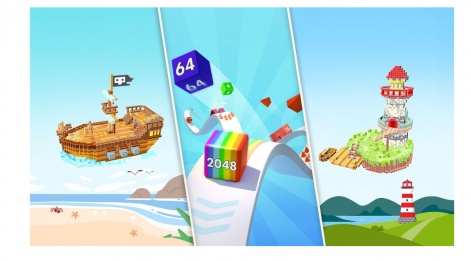
Last year, following a significant rework, Jelly Run 2048 by Goolny Games studio achieved good results. The game's installs soared past 20 million, necessitating further scaling of the project. However, as a short-session runner, providing players with long-term goals became crucial.
In August, we introduced a new meta. While we're still refining it, early results are promising, with installs now exceeding 33 million.
To provide some context, the initial prototype displayed marginal metrics in the USA, including retention rates (R1 34%, R7 5.9%), a high CPI ($0.78), and short playtime (3 minutes). These figures made it challenging for previous publishers to scale the project. Nonetheless, we saw potential in the game and opted to enhance it through several iterations. In the first half of 2022, our efforts focused on expanding content, refining level design, adding new mechanics, introducing new obstacles, and incorporating visual elements that didn't alter gameplay.
These improvements allowed the project to become profitable, paving the way for further expansion through new features, bonus levels, animations, events, and various metas. Although not every meta experiment succeeded, one particular mechanic significantly boosted nearly all metrics, in some cases doubling them. In this article I'm going to talk about it.
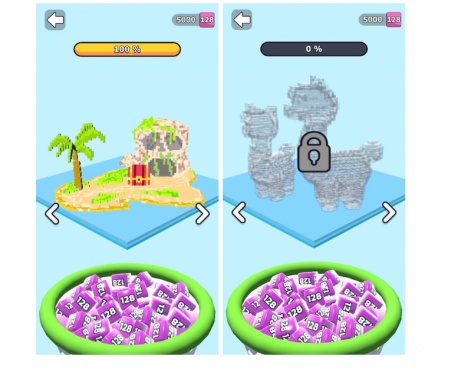
The essence of this new feature is straightforward, revolving around a construction mechanic. By completing levels and scoring points, players collect cubes that can be used to assemble large figures. This mechanic introduces a collection of vex sculptures, providing the much needed long-term goals for players.
Players have shown a keen interest in completing their collections and uncovering new figures. We designed this meta to enhance long-term retention, and together with other updates, such as new skins and themed levels, it significantly improved all metrics:
- A relative increase of 15% in retention across all days.
- A 30% rise in ad views.
- Playtime increased by almost 3 minutes.
- A 25% increase in LTV globally, even more so in the USA.
- A doubling of rewarded ad views.
While the collections play a significant role, the construction mechanic itself has been a critical factor in this success. This mechanic has proven effective in the market, especially within hyper-casual projects with many successful cases. Considering our project's broad audience, we believed many Jelly Run players would also appreciate it.
Moreover, given the game's short session times and the challenge of sustaining long-term retention, we decided to organise the collected objects into collections. Adding trendy items and references, such as the Skibidi meme, has proven effective. This approach resonates across various projects, where the discovery of new skins, objects, or collections enhances player engagement.
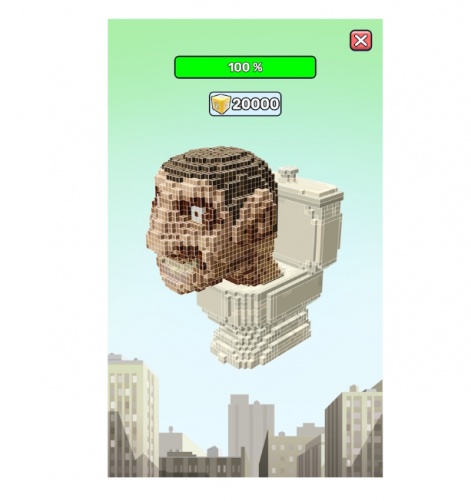
For instance, Taxi Run players often prefer cars that appeal to them visually or have pop culture references over those with superior performance characteristics.
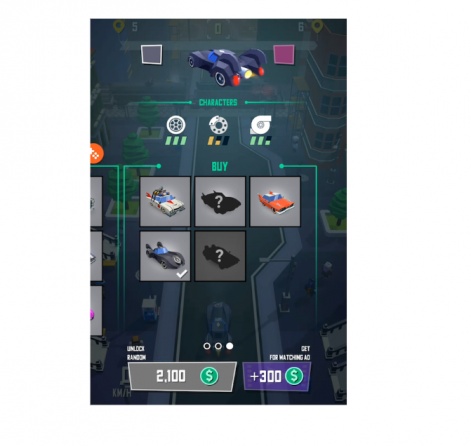
And now, let's delve into how rewarded ad views have effectively doubled. The challenge of collecting new sculptures increases incrementally to ensure a balanced progression system. However, to acquaint players with the mechanics smoothly, the initial object is designed to be collected within the first few levels.
As players progress, the game demands increasingly complex cubes, which can be obtained by scoring higher points in subsequent levels. The gameplay mechanics are as follows: cubes are merged based on matching numbers on their sides. The better a player performs in a level, the more cubes they can combine, leading to the acquisition of higher-level cubes for their construction endeavours. Interestingly, players have the option to watch ads (or use in-game currency) before the start of a level to enhance the initial level of all cubes. This strategic element adds depth, as without the challenge of acquiring more difficult cubes, the incentive to boost their starting value would significantly diminish. Consequently, players are more inclined to watch ads voluntarily to expedite their progress, a win-win for engagement and monetisation.
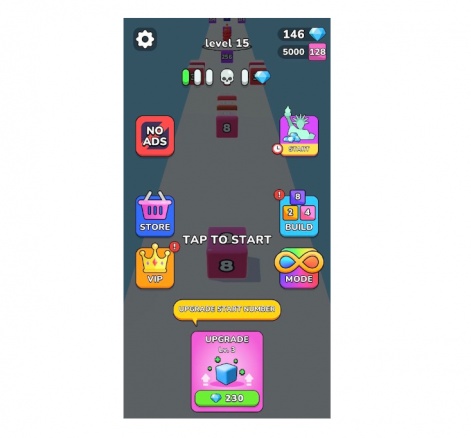
This construction meta has proven to be a powerful engagement tool, and we're excited to further explore its potential. Additionally, we're committed to continuously enhancing the visual appeal and fine-tuning the balance.
Hints on enhancing the construction meta
1. Identify growth opportunities. If your game lacks long-term objectives, incorporating a construction meta can significantly bolster retention over extended periods. In today's gaming landscape, even hyper-casual games can thrive for years, making it crucial for developers in this genre to explore the potential of such metas.
2. Strategise progression. In Jelly Run, the initial sculpture is achievable after 2-3 levels, with progressively advanced figures requiring 5-6 levels, and so on. However, the length of the gaming session will largely influence this.
3. Curate collections. While the construction mechanics inherently provide satisfaction as players witness objects materialising from cubes in real-time, integrating these achievements into a collection accessible from the menu adds another layer. Remember those sticker albums we had when we were kids?
4. Incorporate challenges. Progress isn't solely about the number of cubes but also their "level" (denoted by the numbers on the cube faces). Early figures might be assembled from "twos," while advanced ones require higher-value cubes. As players progress, the scarcity of target cubes decelerates their advancement toward goals.
5. Add animations. We have big plans for the future in this regard, but even now, it’s evident that our theory is working. Animation is a big part of a game’s overall look and feel, and it has become crucial across all mobile games, including hyper-casual titles. Where possible, incorporate varied, smooth animations. The construction process should unfold with satisfying animations rather than abrupt appearances. These animations enrich the gaming experience without necessitating new gameplay mechanics, setting your game apart in a competitive market.
6. Tailor monetisation to the new meta. Introduce rewards that facilitate progression acceleration - this, of course, necessitates a well-calibrated balance and innovate interactions with players.
Edited by Paige Cook





















